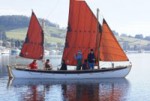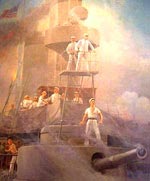 The norovirus has hit the Celebrity Mercury with a vengeance. The Mercury returned to its home port of Charleston today, a day early, and the next cruise will be delayed by two days for an extensive top-to-bottom cleaning and sanitizing of the ship. This will be the third time in three cruises that the ship has been taken out of service for cleaning.
The norovirus has hit the Celebrity Mercury with a vengeance. The Mercury returned to its home port of Charleston today, a day early, and the next cruise will be delayed by two days for an extensive top-to-bottom cleaning and sanitizing of the ship. This will be the third time in three cruises that the ship has been taken out of service for cleaning.
More than 20% of passengers on Celebrity cruise ship are sick
Continue reading

 The death of Eustace at the Battle of Sandwich
The death of Eustace at the Battle of Sandwich


 Last December we
Last December we  One salty dog, indeed. Thanks to
One salty dog, indeed. Thanks to  Some call today
Some call today  The 58 year old,
The 58 year old,
 A few updates on previous posts: The USNS Comfort, the
A few updates on previous posts: The USNS Comfort, the  The
The Last September,
Last September, 
 There is an interesting ongoing conflict over the salvaging of the German pocket battleship
There is an interesting ongoing conflict over the salvaging of the German pocket battleship  Dewey on the Olympia at Manila Bay
Dewey on the Olympia at Manila Bay
 In early February we
In early February we